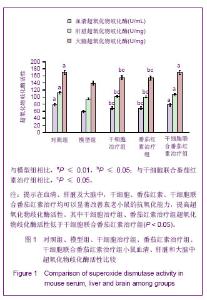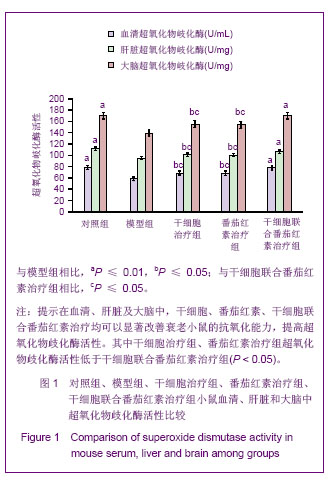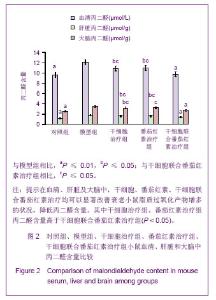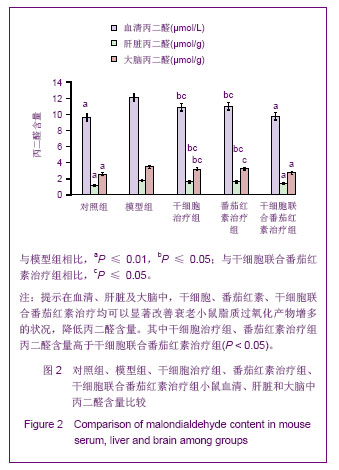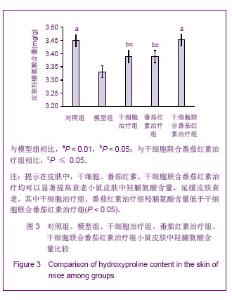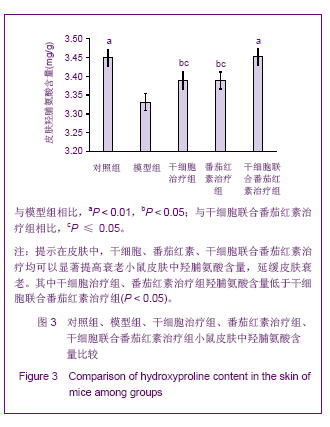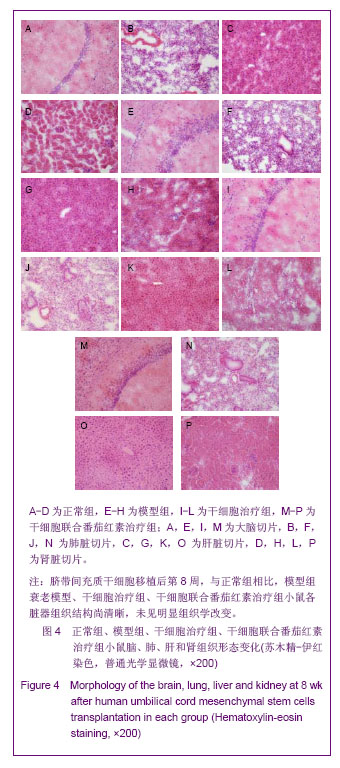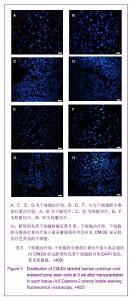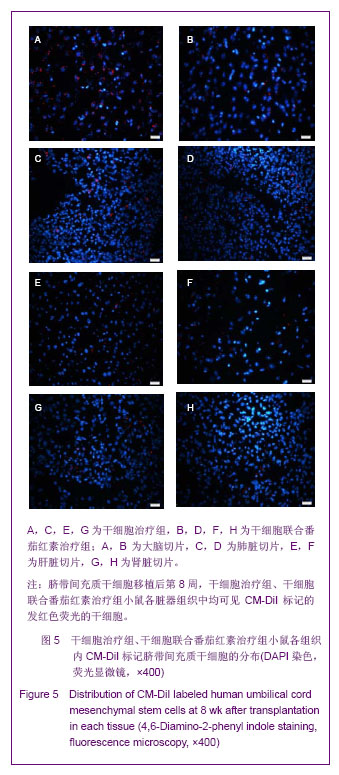| [1]Sohal RS, Mockett RJ, Orr WC. Mechanisms of aging: an appraisal of the oxidative stress hypothesis. Free Rad Biol Med.2002;33(5):575-586.
[2]Campisi J. Cellular senescence as a tumor-suppressor mechanism. Trends Cell Biol. 2001;Supplement 1:S27-S31.
[3]Harman D. Aging: A Theory Based on Free Radical and Radiation Chemistry. Sci Aging Knowl Environ. 2002; 2002(37):cp14.
[4]Pittenger MF, Mackay AM, Beck SC, et al. Multilineage Potential of Adult Human Mesenchymal Stem Cells. Science. 1999;284(5411):143-147.
[5]Lazarus HM, Koc ON, Devine SM, et al. Cotransplantation of HLA-identical sibling culture-expanded mesenchymal stem cells and hematopoietic stem cells in hematologic malignancy patients. Biol Blood Marrow Transplant. 2005;11(5):389-398.
[6]Dazzi F, Ramasamy R, Glennie S, et al. The role of mesenchymal stem cells in haemopoiesis. Blood reviews. 2006;20(3):161-171.
[7]Aggarwal S, Pittenger MF. Human mesenchymal stem cells modulate allogeneic immune cell responses. Blood. 2005; 105(4):1815-1822.
[8]Bruder SP, Kurth AA, Shea M, et al. Bone regeneration by implantation of purified, culture-expanded human mesenchymal stem cells. J Orthop Res.1998;16(2):155-162.
[9]Kadiyala S, Young RG, Thiede MA, et al. Culture expanded canine mesenchymal stem cells possess osteochondrogenic potential in vivo and in vitro. Cell Transplant. 1997;6(2): 125-134.
[10]Dennis JE, Merriam A, Awadallah A, et al. A Quadripotential Mesenchymal Progenitor Cell Isolated from the Marrow of an Adult Mouse. J Bone Miner Res.1999;14(5):700-709.
[11]Ferrari G, Cusella G, Angelis D, et al. Muscle Regeneration by Bone Marrow-Derived Myogenic Progenitors. Science. 1998; 279(5356):1528-1530.
[12]Kern S, Eichler H, Stoeve J, et al. Comparative Analysis of Mesenchymal Stem Cells from Bone Marrow, Umbilical Cord Blood, or Adipose Tissue. Stem Cells. 2006;24(5):1294-1301.
[13]Baksh D, Yao R, Tuan RS. Comparison of proliferative and multilineage differentiation potential of human mesenchymal stem cells derived from umbilical cord and bone marrow. Stem Cells. 2007; 25(06):1384-1392.
[14]Erices A, Conget P, Minguell JJ. Mesenchymal progenitor cells in human umbilical cord blood. Br J Haematol. 2000; 109(1):235-242.
[15]中华人民共和国科学技术部. 关于善待实验动物的指导性意见. 2006-09-30.
[16]陈丽,吴本清,程涵蓉,等. CM-Dil体外标记人脐带间充质干细胞传代示踪的可行性[J].中国组织工程研究与临床康复, 2010, 14(40):7435-7438.
[17]de Boer J, Andressoo JO, de Wit J, et al. Premature Aging in Mice Deficient in DNA Repair and Transcription. Science. 2002; 296(5571): 1276-1279.
[18]Sanchez-Ramos J, Song S, Cardozo-Pelaez F, et al. Adult Bone Marrow Stromal Cells Differentiate into Neural Cells in Vitro. Exp Neurol. 2000;164(2): 247-256.
[19]穆欣,薛玉梅,许明.番茄红素的研究进展[J].辽宁农业科学, 2007, (2): 36-39.
[20]王岩,周义新.番茄红素的研究进展[J].国外医学:卫生学分册, 2000,27(4):197-200.
[21]李艳菊,胡亮杉,郭坤元.间充质干细胞在衰老大鼠体内归巢的研究[J].中国老年学杂志, 2009,29(7): 823-826.
[22]邢玉芝. D-半乳糖诱导生物体衰老与细胞衰老模型的实验研究[D]. 四川大学, 2006.
[23]Zanier ER, Montinaro M, Vigano M, et al. Human umbilical cord blood mesenchymal stem cells protect mice brain after trauma. Crit Care Med. 2011;39(11): 2501-2510.
[24]Cheng Z, Ou L, Zhou X, et al. Targeted Migration of Mesenchymal Stem Cells Modified With CXCR4 Gene to Infarcted Myocardium Improves Cardiac Performance. Mol Ther. 2008;16(3): 571-579.
[25]Ferreira E, Potier E, Logeart-Avramoglou D, et al. Optimization of a gene electrotransfer method for mesenchymal stem cell transfection. Gene Ther. 2008;15(7): 537-544.
[26]Marshall BL. The New Virility: Viagra, Male Aging and Sexual Function. Sexualities. 2006; 9(3): 345-362.
[27]Chen J, Sanberg PR, Li Y, et al. Intravenous Administration of Human Umbilical Cord Blood Reduces Behavioral Deficits After Stroke in Rats. Stroke. 2001;32(11): 2682-2688.
[28]Le Blanc K, Tammik L, Sundberg B, et al. Mesenchymal Stem Cells Inhibit and Stimulate Mixed Lymphocyte Cultures and Mitogenic Responses Independently of the Major Histocompatibility Complex. Scand J Immunol. 2003;57(1): 11-20.
[29]Le Blanc K, Ringdén O. Immunomodulation by mesenchymal stem cells and clinical experience. J Int Med. 2007;262(5): 509-525.
[30]Duijvestein M, Wildenberg ME, Welling MM, et al. Pretreatment with Interferon-γ Enhances the Therapeutic Activity of Mesenchymal Stromal Cells in Animal Models of Colitis. Stem Cells. 2011;29(10): 1549-1558.
[31]Mansilla E, Díaz Aquino V, Zambón D, et al. Could Metabolic Syndrome, Lipodystrophy, and Aging Be Mesenchymal Stem Cell Exhaustion Syndromes? Stem Cells Int. 2011; 2011: 943216. |
